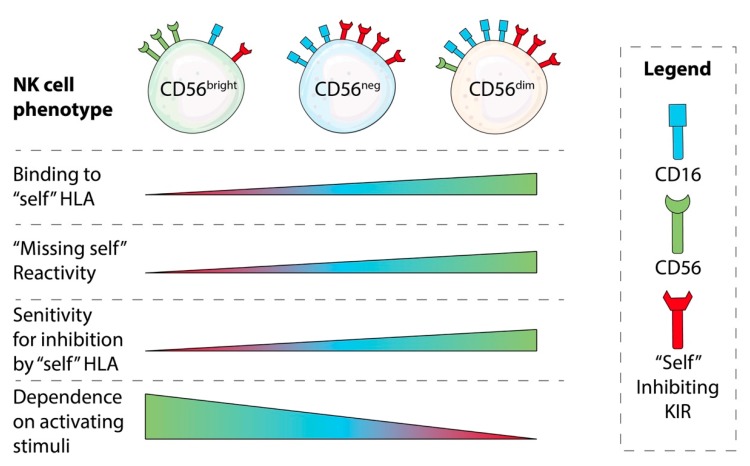Figure 1.
NK cell phenotypic variation and its impacts on NK cell education and interactions with viruses. NK cells are educated based on the interaction between their receptors and “self” HLA class I molecules. KIR, a family of receptors on NK cells that can be categorized as inhibitory or activating, bind to “self” HLA molecules. Highly educated NK cells are those whose inhibitory KIR strongly engage “self” HLA. This permits strong missing self reactivity, but also renders educated cells sensitive to inhibition against targets where HLA expression persists. By contrast, poorly or uneducated NK cells require strong activating signals to become reactive, but remain refractory to inhibition by HLA molecules. Hence, NK cell education creates a spectrum of diversity in NK cell effector responses. Some chronic viral infections, such as HCV, can skew an individual’s NK cell repertoire toward one comprised of cells with the phenotypic and functional characteristics of a naive population, including poorer cytotoxicity. During chronic infection, CD56bright NK cell populations diminish while CD56dim and CD56neg NK cell populations expand. The resulting NK cell populations display more CD16 receptors (which are responsible for ADCC), and increased activating receptor density, but are inefficient for eliminating infection.

